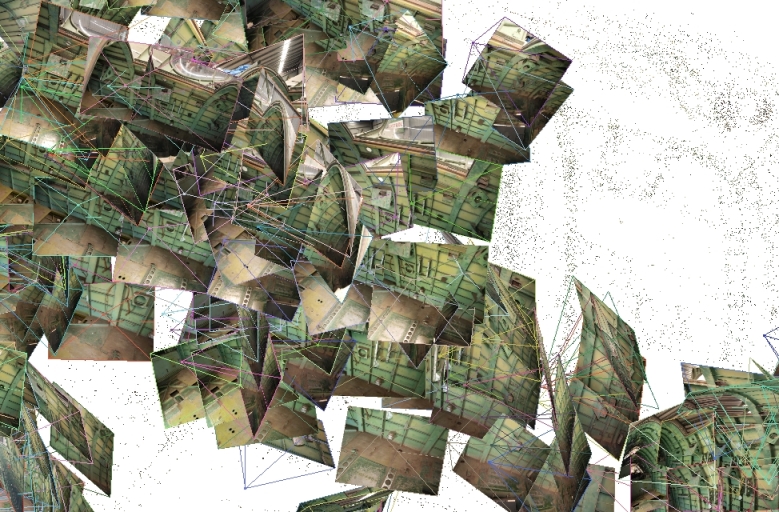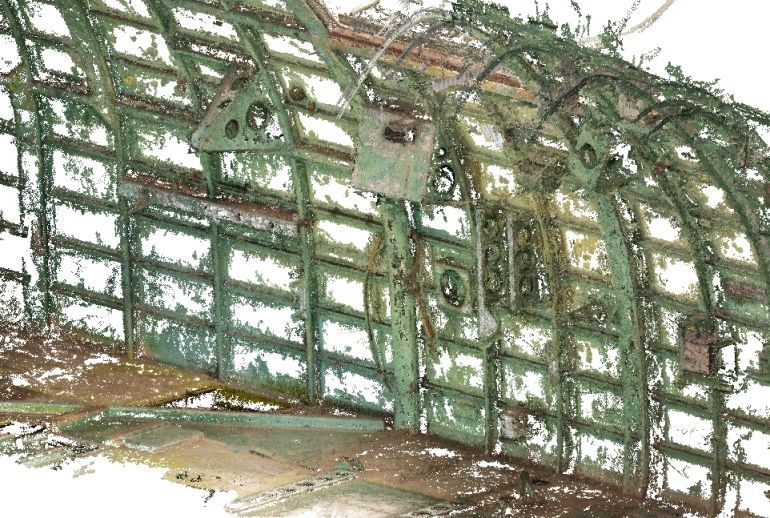In February this year I endured the heat in the Camden Museum of Aviation’s Beaufighter 21 to take 400+ photos of the interior of the aircraft. I was in the fuselage for about an hour from 10am and was drenched with sweat at the end of it. This series of photos focused on the starboard side around the observer’s station. I’m thinking that the 3D result can be useful for several things, such as:
- An extended record of the aircraft ‘as is’. This area of the fuselage is basically quite empty. A large number of photos can provide a record on their own, but this always presents the problem of having to layout the photos to identify the relative positioning. VSFM provides the context for all of the images, and the 3D point cloud provides a continuous representation of the aircraft structure.
- A means of communicating specifics with others working on Beaufighters. A way of doing this may be to work with a 3D pdf file. This would include any annotations applied to the 3D that identify part-numbers, descriptions, queries or problems to be solved, etc.
- When correctly scaled the point cloud can be used as the basis of a Digital Mock-Up (DMU) in a CAD package. Any parts that need to be reverse-engineered can be located correctly and relationships to structure and other components can be assessed in general terms. This would need to be used with caution, but could be used for initial assessments before fabricating new-build parts and could indicate areas that require more detailed study before proceeding.


